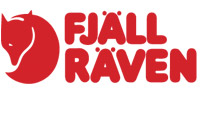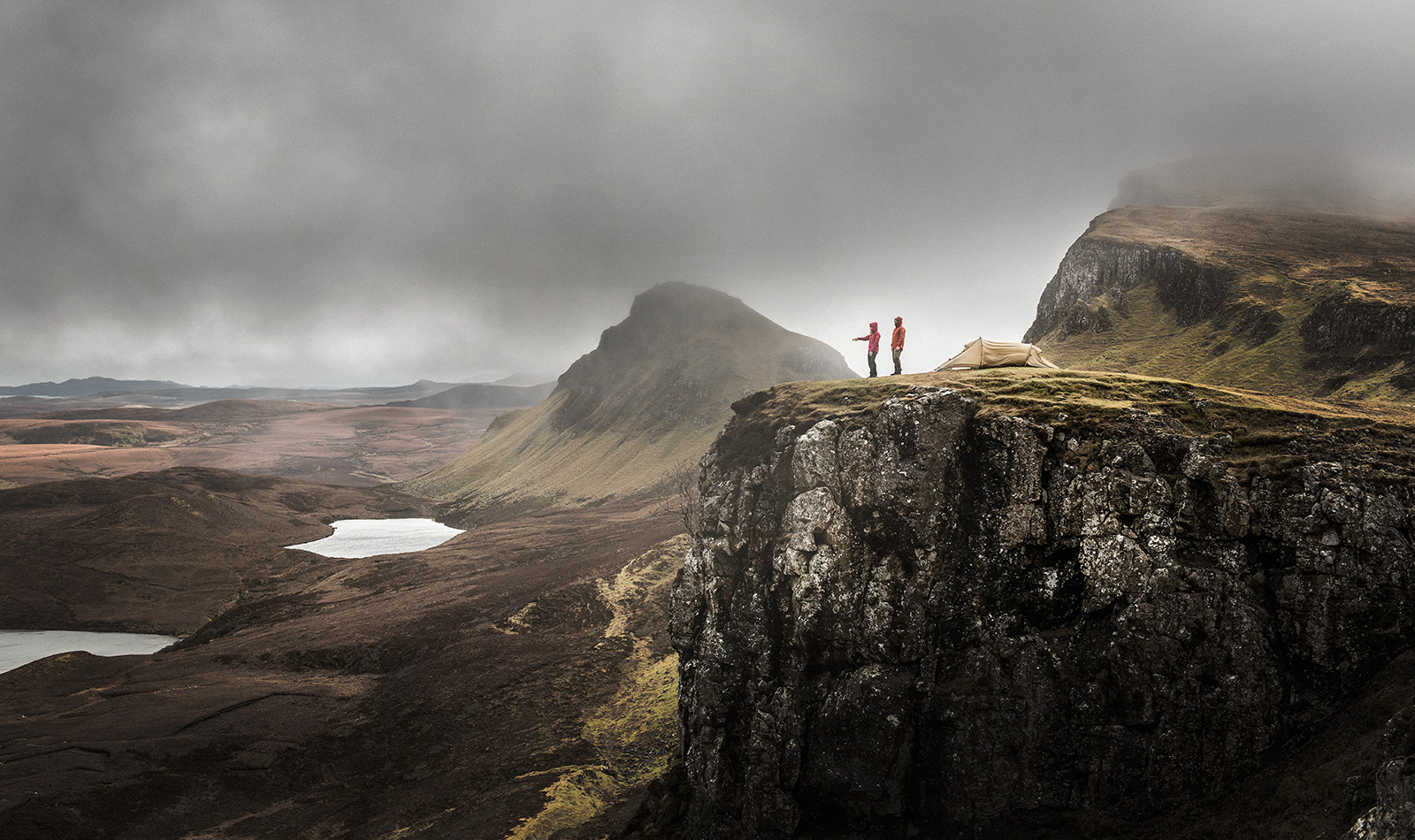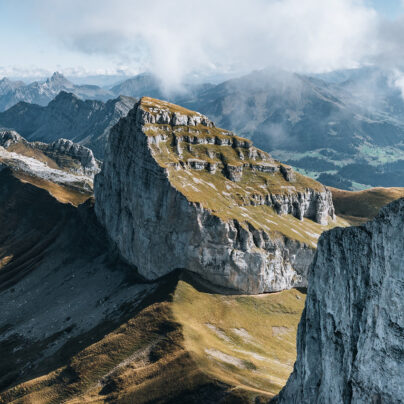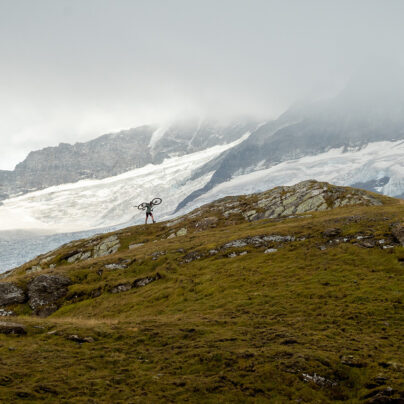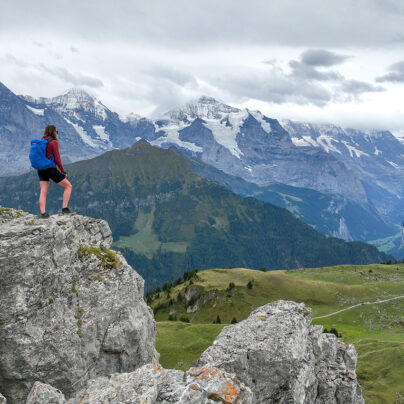Beyond
Written by Daniel Neilson // Photography by Anders Brogaard
We are looking for the beyond. Beyond the city limits and beyond the Trossachs. Beyond the great Rannoch Moor and beyond the mountains. Beyond the rock of the mainland and the trivia of everyday life.
The plan was simple: walk, see, learn, eat, sleep, look, listen and laugh. We’d spend a weekend hiking, eating well, camping out. We’d also heard about a bothy called the Lookout along the northern cliffs of the island. We heard it’s the most spectacular location of any bothy in Scotland; quite a claim. This was our destination, but our journey would be one of escape.
Edinburgh. The plane thuds down. Queue. Baggage claim. Car keys. Bumps checked. Traffic lights. Roundabouts. Phone calls and pickups made. Express coffee. Motorways. 70mph. More coffee. WhatsApp. Everyday life.
And then the mountains begin to rise out of Loch Lomond, higher and higher as the ancient geological tumult ravaged this earth. Rannoch Moor, 50 square miles of bog, a more inhospitable place in Britain we’d struggle to find before the Highlands begin in earnest with Buachaille Etive Mòr, the Hollywood A-lister of a mountain, almost sculpturally perfect – at least from this angle as we pause to snap photos for Instagram. No filters needed here. As the mountains rise, the road struggles to find any straight lines. We stop again at the lay-bys to wonder at the views on this perfect, blue day. Highland weather is rarely like this.
The mountains of Scotland have been places of safety and danger, of hardship and pleasure. Our final mainland stop is at Kyle of Lochalsh. Perhaps the last cashpoint machine, maybe the last 3G reception. And from a small spit of land in a hotel car park, we see the Skye Bridge. Now the focus changes, time slows down, the grand view opens. Silence descends.
Skíð or Skye. The name could have come from the early Celtic word ‘skitis’, meaning ‘winged’. Looking at the map, it doesn’t immediately look wing-shaped, but the feathers spread away from the Black Cuillin. This mountainous crest, truly black, is the dominating point of Scotland’s second-largest island – but the Cuillin is not our destination this time. Instead we will travel north to Uig on the most northerly finger to begin our walk. Before setting off, however, we need supplies.
Our excited discussion focuses on the Oyster Shed in Carbost. We’d heard about the little shack and its haul of oysters, scallops, lobster. We order a couple of local seafood platters and some chips. Langoustines, crab, huge juicy scallops, and half a lobster. From the little deck outside, we see a storm grumble down the loch, its edges just a couple of hundred metres from us. The loch darkens and then the sun appears again. Rainbows glow and then fade to darkness. It’s lunchtime and we’ve been treated to a Hebridean weather lesson. We buy some sausages, scallops and langoustines and head north to Uig.
The mountains begin to rise out of Loch Lomond, higher and higher as the ancient geological tumult ravaged this earth… Now the focus changes, time slows down, the grand view opens. Silence descends.
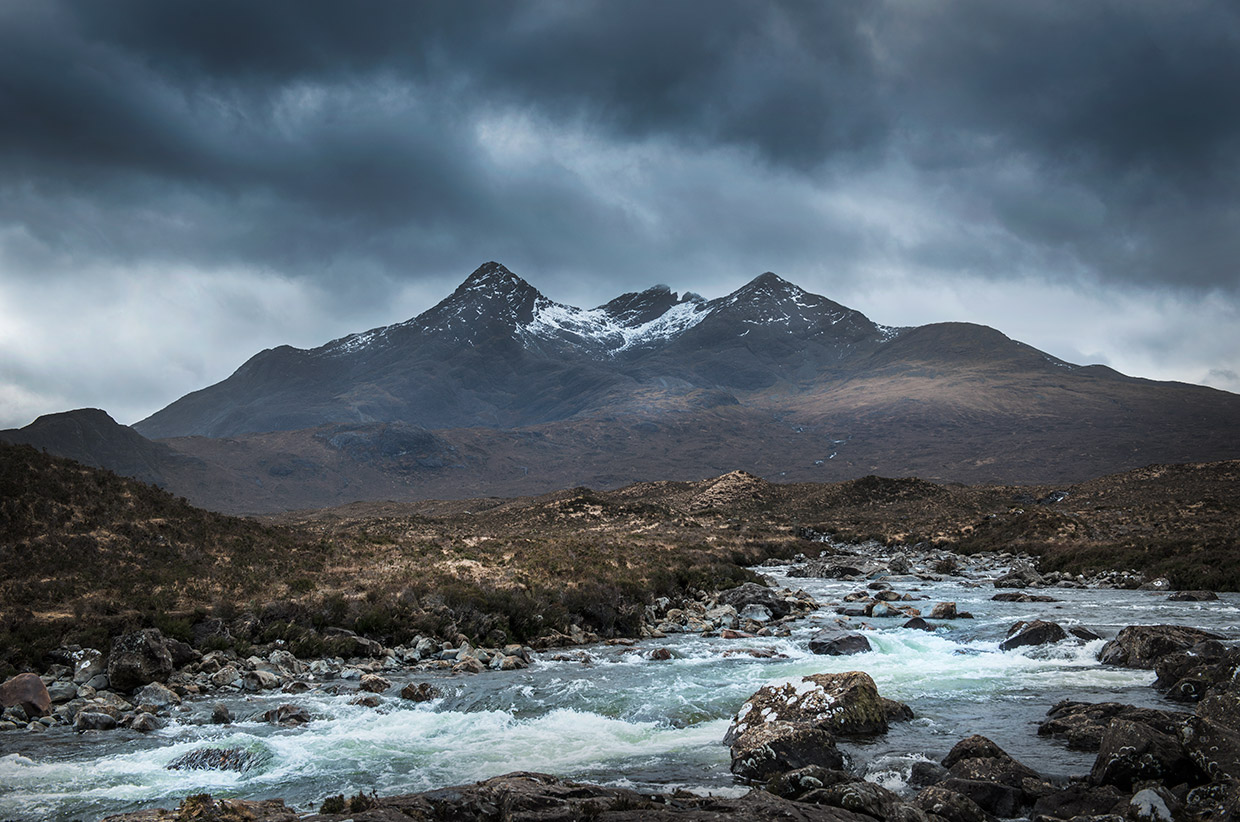
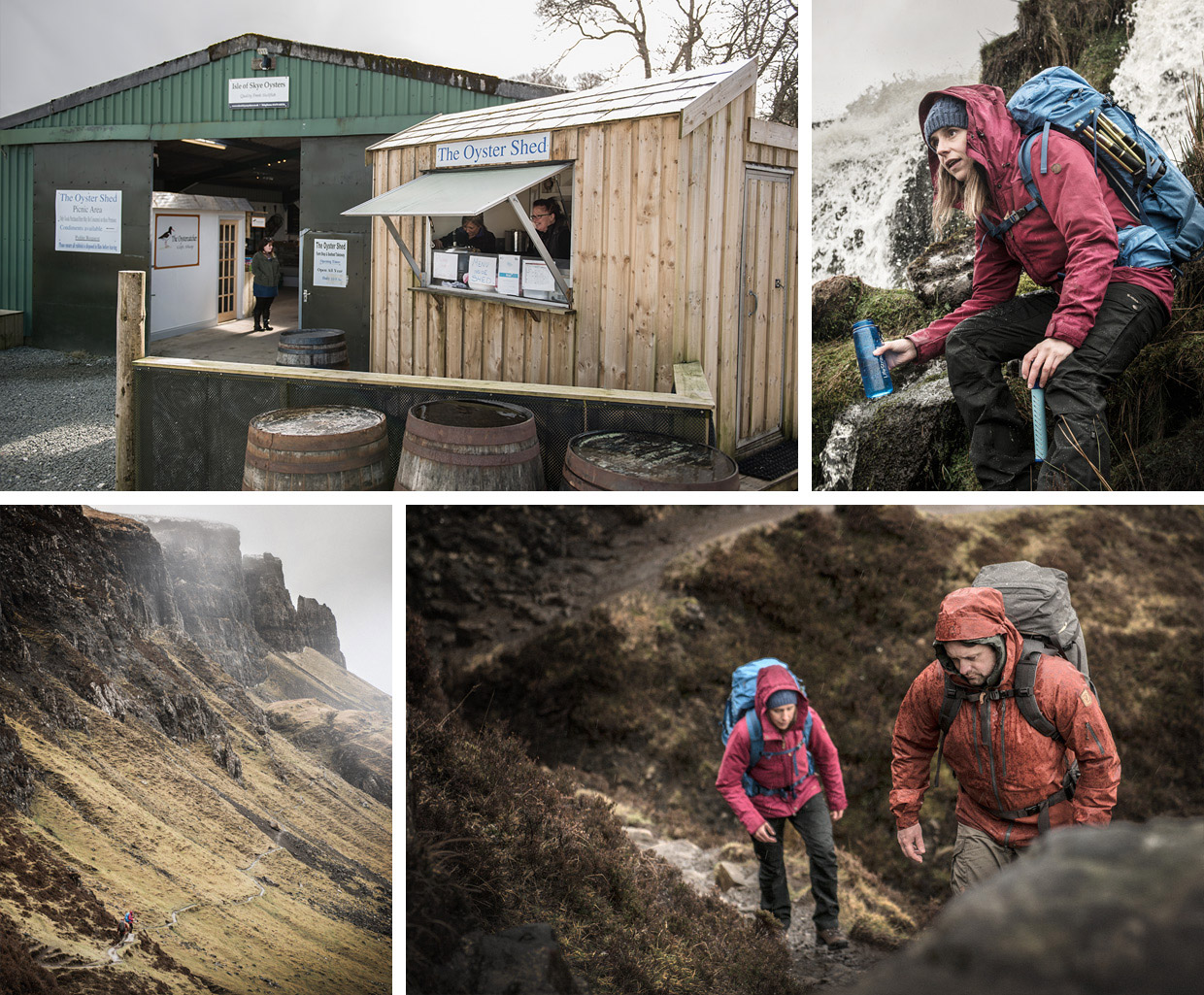
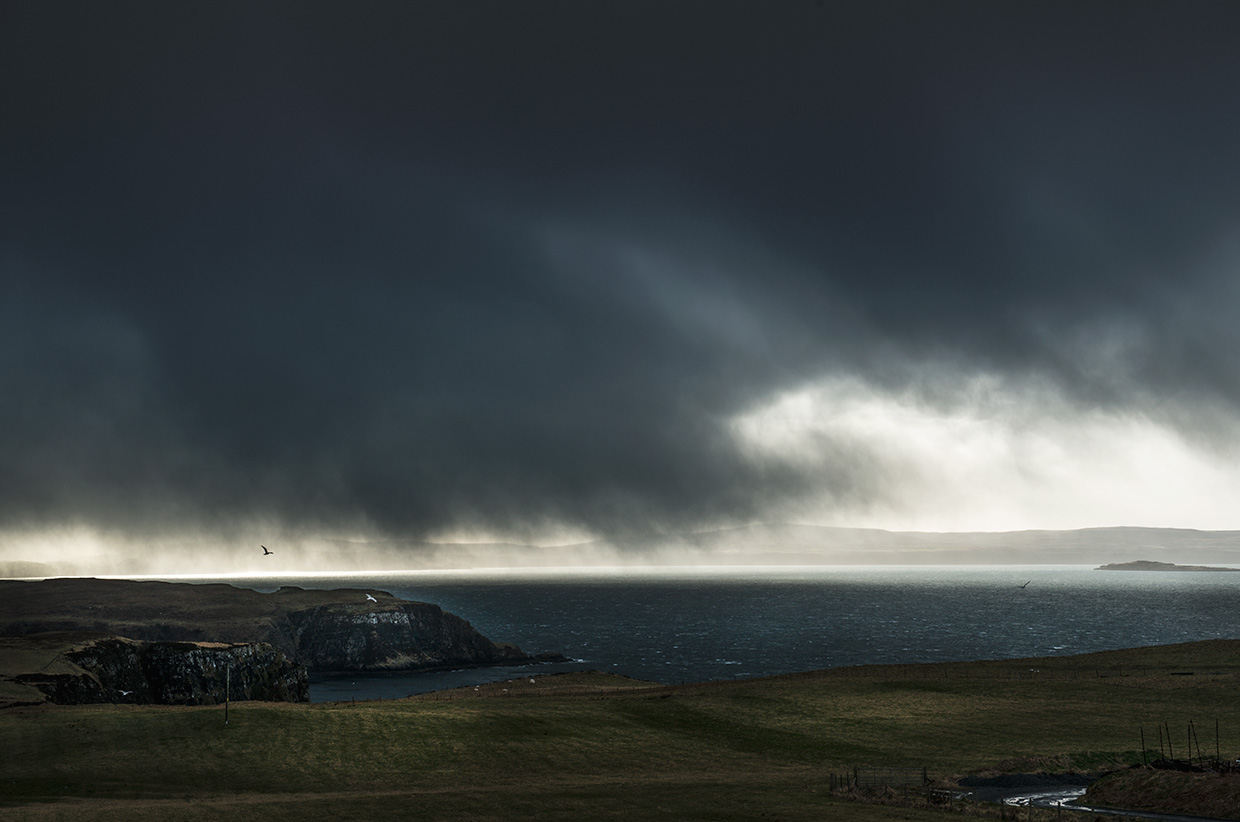
By walking west to east, we can examine a slice of the geological pie. West of the escarpment, the green land undulates gently, rising slowly. We follow it up to Druim na Coille, the point where the land teeters and falls. The escarpment was created by a series of vast landslips that fall almost 200m directly down.
There are often complaints about busy roads in summer, but it is quiet in the off season. We even manage to get a room at the Cowshed, a luxurious bunkhouse with bird’s eye views over Uig Bay towards North Uist. The ferries aren’t running – which we learn is a rarity – but the wind is high, even for these northern islands. We watch, from the comfort of an armchair, log fire blazing and whisky in hand, as front after front comes through the bay. A fish supper, another couple of drams, and the kind of sleep that only comes with complete relaxation.
The morning begins as mornings before adventures do, with a nervous excitement, with checks and rechecks of the weather, packing and unpacking. The ferries still aren’t running to Uist. It’s quite windy. After a final coffee, we wrap up and head out into the sun. In the distance, the darkness of another downpour was approaching, but we were well prepared.
This wasn’t to be a route march or a misery memoir, but an enjoyable walk. Although we could feasibly do our route in a single day, that’s not what we wanted, and so we headed out east rising slowly. Northern Skye, the Trotternish peninsula, is a land of two halves, divided by a vast 30km escarpment that runs roughly north to south just east of centre.
By walking west to east, we can examine a slice of the geological pie. West of the escarpment, the green land undulates gently, rising slowly. We follow it up to Druim na Coille, the point where the land teeters and falls. The escarpment was created by a series of vast landslips that fall almost 200m directly down. We head north, to the Quiraing where we’ll camp. The huge geological pressures have carved this landscape out to look like nowhere else in Britain. More remarkable is that the pressures that shattered the land into these bizarre formations are still happening. The Quiraing is the only part of the escarpment still moving, requiring regular road repairs.
From above the Quiraing, we spot the named geological features: the Needle, the Table, and the Prison. The view is immediately recognisable in the world of Instagram, but nothing quite prepares you for it. Only in the Grand Canyon has my brain been tricked into not believing my eyes. The landscape of Trotternish is overwhelming in its beauty, in its natural history; and here we stay, fastening our tent down against the wind. To the east, the land is tamed, gently slipping into the sea. We fry up some langoustines, contemplating the landscape around us as it changes by the minute. We brew coffee, and watch, wondering when was the last time we stared at this world for an hour without checking our phones.
After making another coffee and packing up our tent we head among the jumble of the Quiraing. Below the imposing pillars of the Prison. This path, below the cliffs of the escarpment, has to be one of the finest paths in Scotland. Loch Hasco and Loch Langaig are hidden among the gentler folds beneath. On this misty day, they appear ghostly, deep, endless.
We follow the cliffs north as the land calms, stopping to eat our snacks and occasionally sheltering from the rain that passes frequently but briefly. Dolphins and basking sharks are regularly seen along this coastline, but they remain elusive.
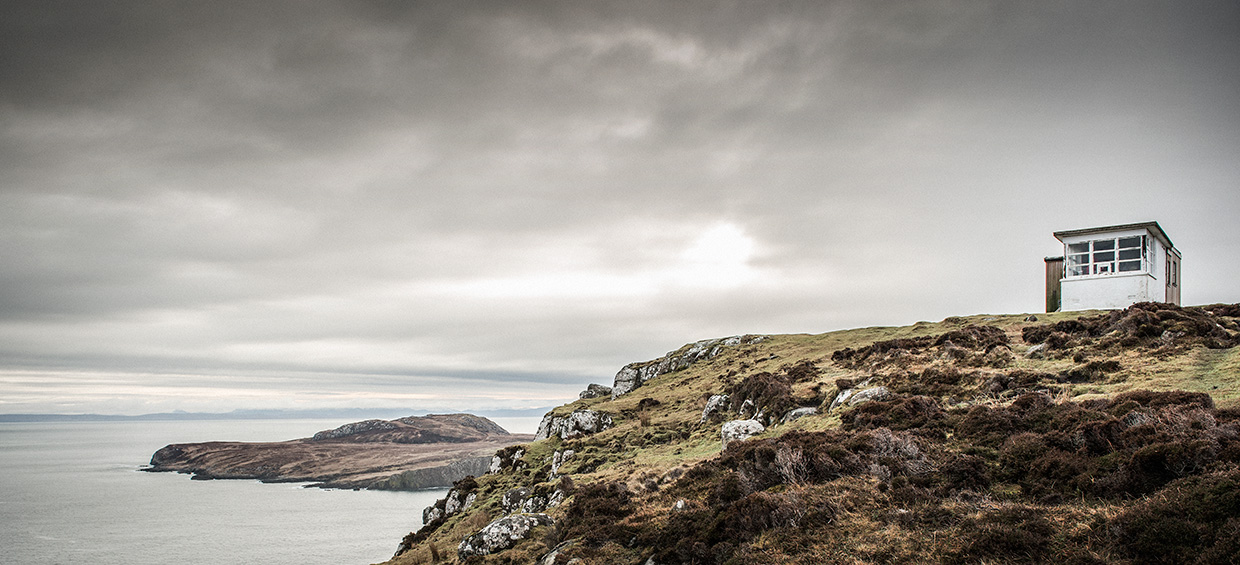
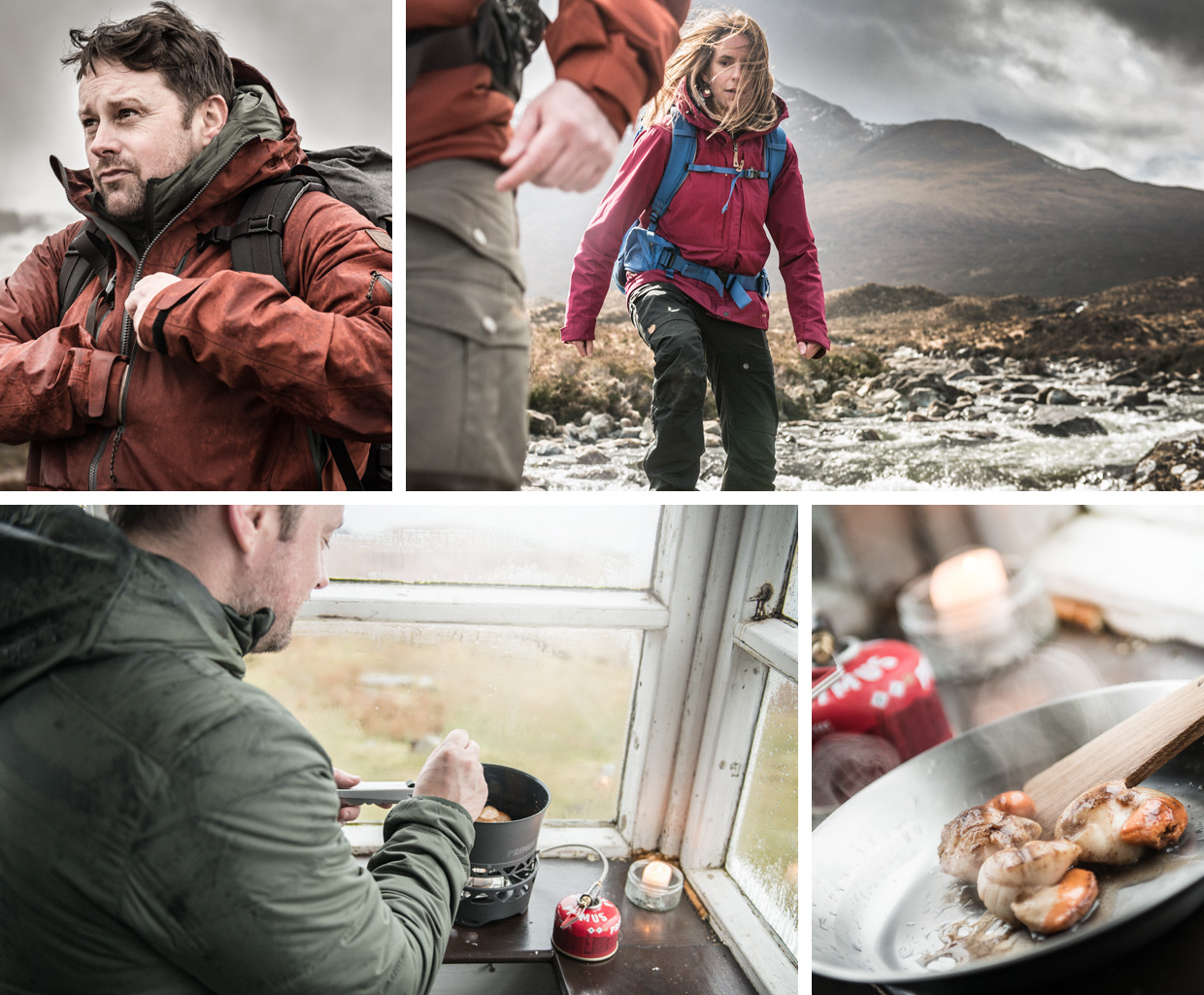
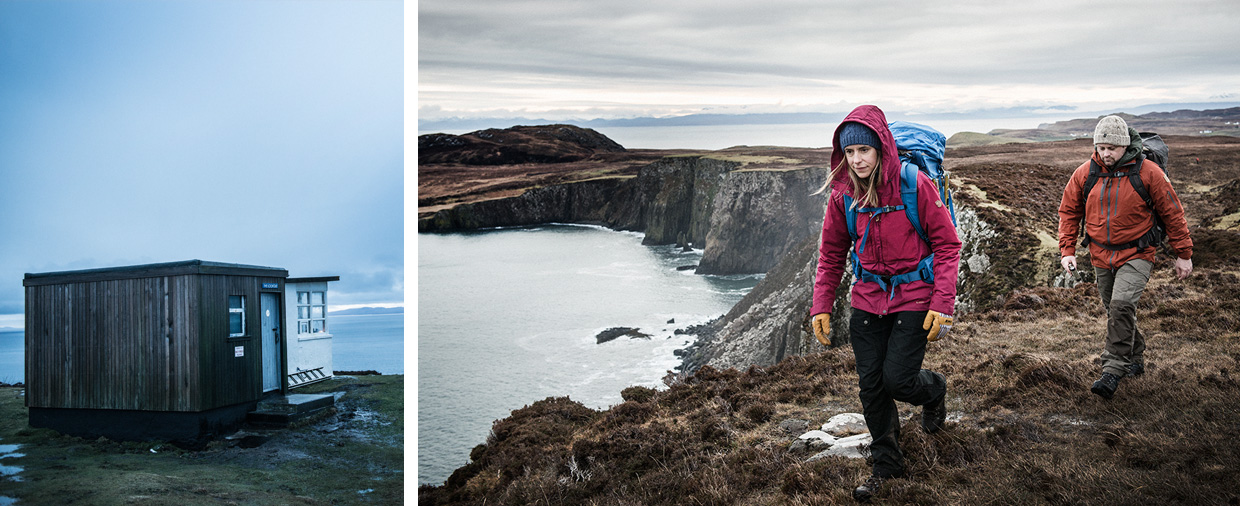
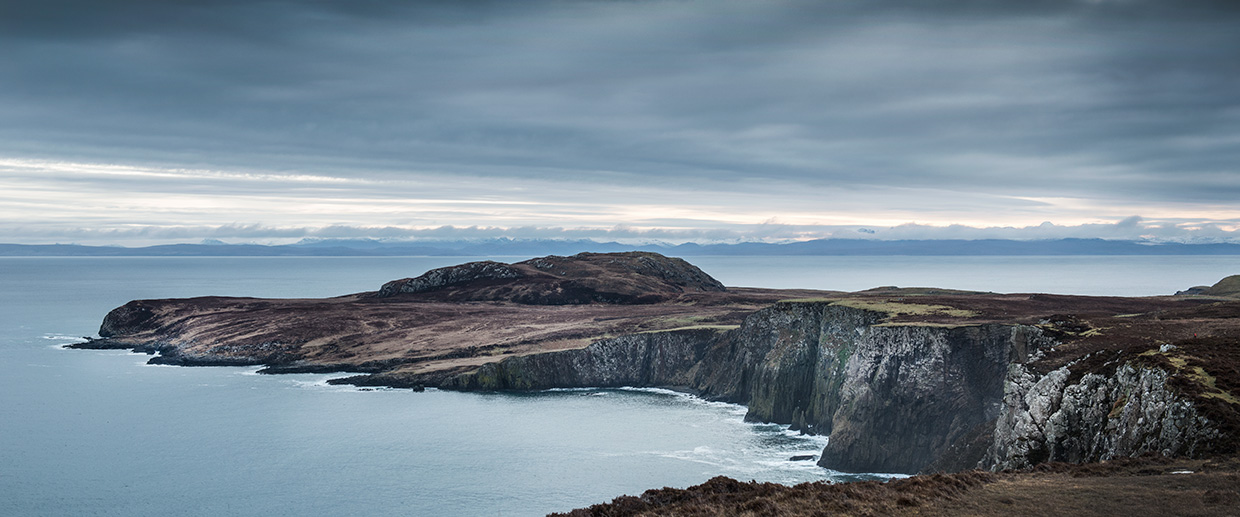
No-one lives at Erisoco anymore. Eight houses that once homed families, making a living crofting off this harsh, remote land, are now ruins. The drystone walling, while impressive, provides little shelter for passing walkers. I doubt it provided much shelter for these families. It was deserted by 1875, but shown in maps dating much earlier. It’s a poignant pause.
Now we climb onto the broad ridge along the Rubha Hunish peninsula in search of our shelter. The Lookout can’t be found until you’re upon it, but when you do it’s a moment to cherish. This half-black, half-white building used to be an old coastguard lookout, built in 1928. Today, it’s a bothy run by the Mountain Bothies Association. Wide-open windows look over the Minch, as the body of water is known. Inside, we meet two German girls holed up here for a couple of days unable to leave this beautiful place.
It’s mid-afternoon when we arrive. We cook up the scallops and eat them, peer through rain-wracked windows. As the evening comes, the weather calms and we spend a couple of hours walking along the cliff edge, watching the waves fizz on the rocks far below and often just staring at this landscape. As the kaleidoscopic skies finish their show and begin to darken, we retreat back to the Lookout. In the company of our new friends, we share drams and stories until it seems late. Every so often, one of us wanders outside just to look at the stars.
To explore Skye is to explore an aeon of time; sometimes it seems as though the beasts of prehistory could appear around a mountain. Millennia upon millennia of human history tangibly inhabit this island. This is true of most places, but on Skye I think you perhaps become more attuned, more alert, more alive. On Skye, at the Lookout, on these mountain passes, we are far beyond our daily lives. It’s an escape and a release, and it often lies close by.
Written by Daniel Neilson
Instagram: @danieljneilson
Photography by Anders Brogaard
Website: aeromotion.dk
Instagram: @andersbrogaardphoto
Facebook: /aeromotion
Produced in partnership with Fjällräven // @fjallravenofficial
